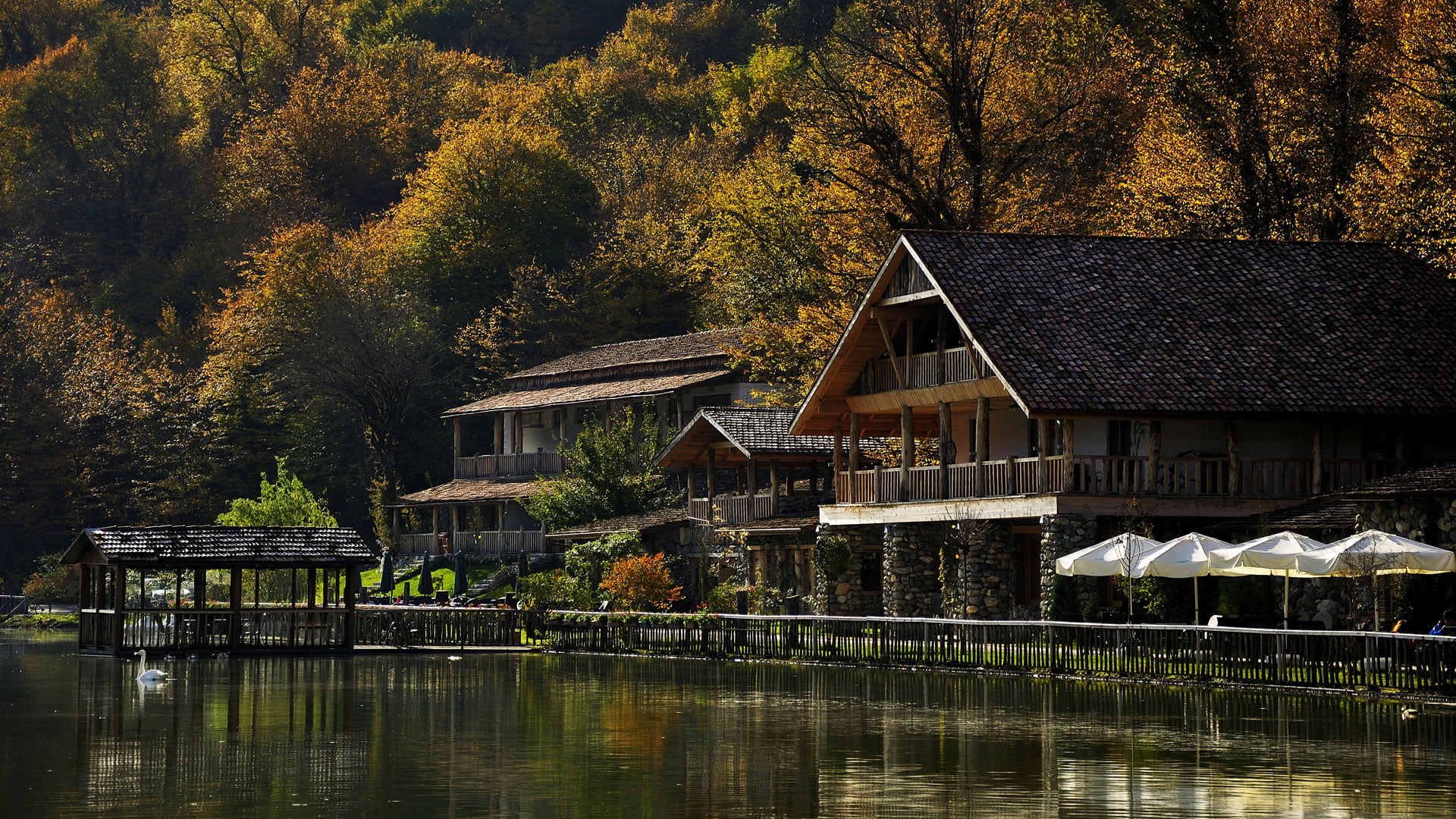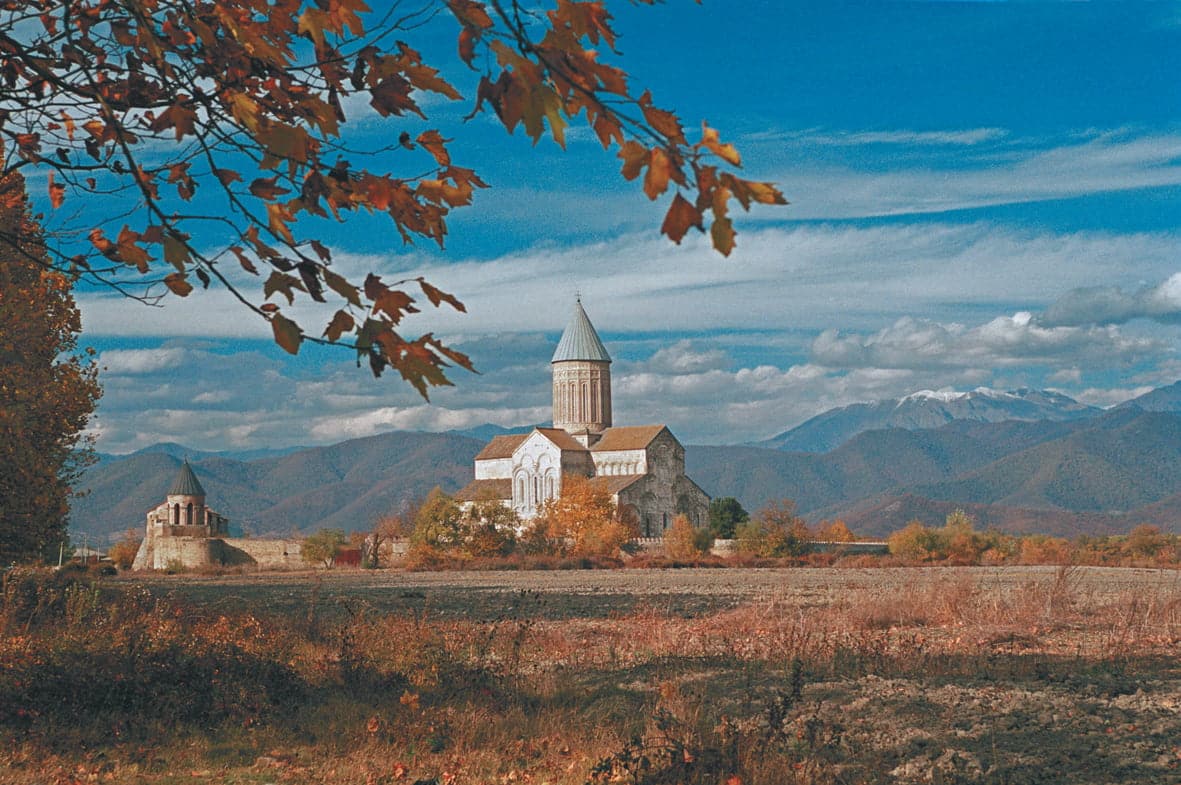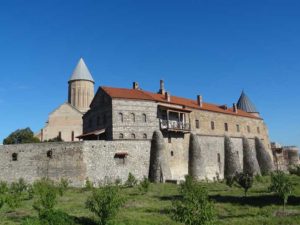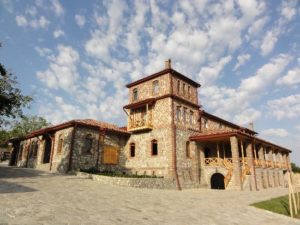Telavi history of kakheti
Features of the history of kakheti :
Telavi is mentioned in the history as one of the oldest towns of Kakheti, which is a region situated in the east part of Georgia. The etimology of the word “Telavi” is related with the name of the tree “tela” common in this area.
The earliest human settlement in Telavi is dated to the late Bronze. Its development began in the Hellenistic period. In the late antiquity the settlement grew into a town which was first mentioned as “Telada” in Claudius Ptolemy’s “Geography” (2nd cent. A. D.). Another one of the earliest surviving accounts about Telavi belongs to an Arabian Geographer Al Mukadas of the 10th century, who has mentioned Telavi along with such important towns of that time as Tbilisi, Shamkhor, Ganja, Shemaha and Sharvan. He also speaks about the population of Telavi and mentions that most part of it were Christians. According to him Telavi was densely populated town by that time. As for Georgian manuscripts the 1st reference of Telavi dates it back to the 9th cent. A. D. By this time the town was main center of Kakheti-Hereti principality and one of the most important towns in Georgia with highly developed trade and artistry.
During its long history Telavi had very hard times. When the Mongolian invasions began in the late 13th c., the importance of the town declined. In the 15-16th c. the town revived but then its development was hindered by aggressive campaigns of the Iranian Shah Abbas I. Favorable conditions for the flourishing of the country arose in the 60’s of the 17th cent., during the reign of king Archil II of Kakheti. He moved his residence from Gremi to Telavi and built many places there. After the king Archil II, almost a century later king Irakli II made a special epoch in the history of Kakheti. His name became a symbol of freedom and national independence of the Georgian people. He is associated with actions aimed at national liberation and unification of Georgia. Irakli’s reforms changed the economical, political and cultural orientation of kartl- Kakheti fundamentally and, subsequently of the whole Georgia. Georgian people affectionately call him “patara kakhi” (little Kakhetian).
There are numerous significant historical monuments in Telavi. Of the archeological monuments of the 5-6th centuries the ancient church Gvtaeba has been reserved. The monument was restored in 16th century, but the columns of the main nave and horseshoe shaped arch have survived from the old times. Also among the important monuments in Telavi a palace “of the size of the town” is worth mentioning. The fortress occupies quite a large area and the walls of the fortress guard a small church “Goris Jvari”. The walls are destroyed down to the foundation only in a few paces, but their major part has been well preserved. In the central part of the town stands “Batonistsikhe”, the residence of the Kakhetian kings of the 17-18th centuries. It was built by king Archil II, when he moved with his court from Gremi to Telavi. This is the place where above mentioned king Irakli II was born and dies. This ancient complex consists of fortress walls, a palace, two gate side churches, a bath and a tunnel. The fortress wall is made of stone and has two built-in gates-eastern and western.
Lopota Lake locating in the Telavi region, in the village of Napareuli, has been opened for only several years now, but it is already one of the popular recreation grounds in Kakheti region. It is an idealistic place for those who enjoy being in mountains surrounded with admiring nature. Fishing, biking, horse riding, tennis, mini golf, football, swimming pool, comfortable hotels with excellent rooms and delicious cuisine-this is an incomplete list of things a guest can have and enjoy at Lopota.




